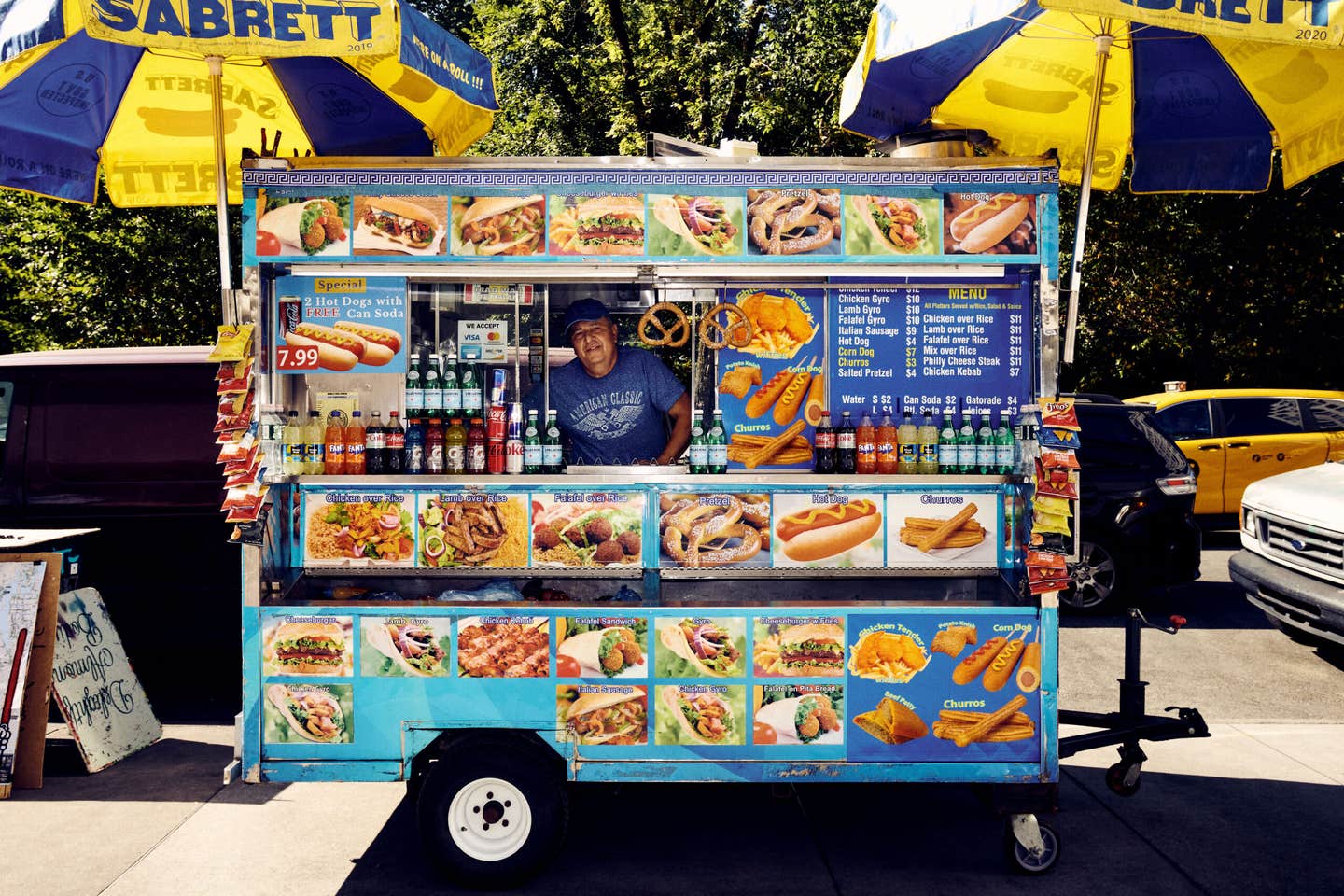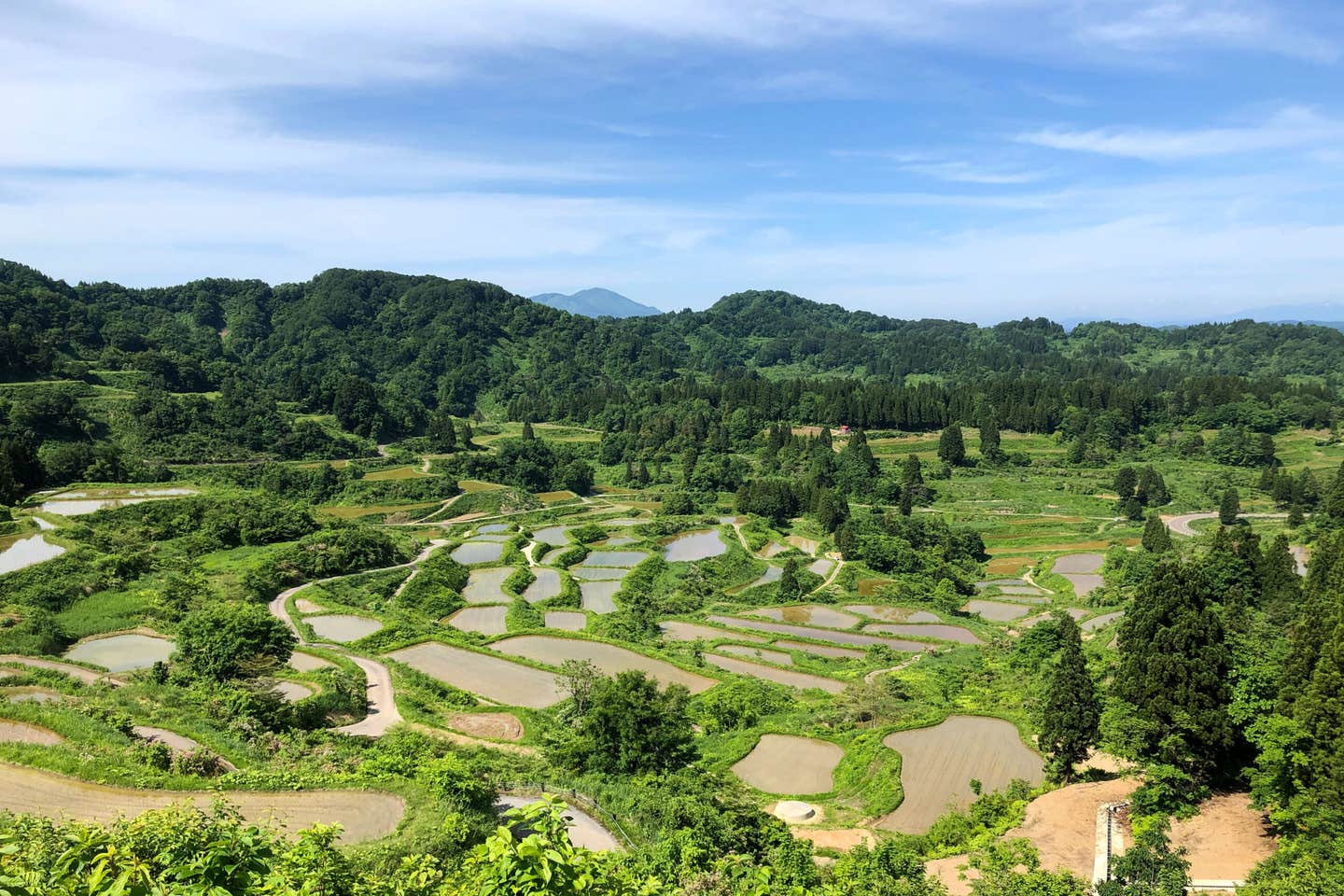
Tucked Away in Japan’s Rural Mountains, Plant-Driven Cuisine Is Flourishing
While meat consumption across the nation has increased by 20% over the past two decades, one small town remains dedicated to extolling the virtues of plants.
Enter an average home in Japan for dinner today, and the spread is bound to include meat dishes. Japanese cuisine is so omnivorous that, until recent years, vegetarian restaurants were a rarity. But for most of Japan’s history, the majority of people have actually followed a primarily vegetarian diet, with meat considered an occasional delicacy. This makes it all the more surprising that Japan’s annual production of approximately 3.3 million tons of meat only covers about half of the nation’s continuously growing demand for it. It may appear Japan has lost touch with its vegetarian past—but a group of restaurant owners in the country’s rural mountains is working to change that, one bowl of rice at a time.
Japan’s appetite for meat dates back approximately 150 years, when Japanese society began associating it with wealth as a result of Western influence. During World War II, Japanese diets changed out of necessity, due to not only a shortage of farm workers but also redirection of resources toward the war effort by the military-controlled government. By the war’s end, many people had come to depend on foods that previously may have been discarded, such as offal, to avoid starvation. In the decades that followed, Japan saw rapid economic advancement, and as the population became more affluent, meat began occupying a more central position on people’s plates. Fast forward to the present day: enjoying KFC at Christmas has become a longstanding tradition in Japan, stand-up fast-casual steakhouses are gaining popularity, and customers line up for hours at restaurants like Ramen Jiro, a chain serving massive bowls of noodles in fatty pork-bone broth, usually with generous slabs of chashu pork belly on top.
Meat-heavy establishments begin to fade, however, as one heads into more rural areas, including the mountains of Niigata Prefecture on the west coast of Honshu Island. Here sits Minami Uonuma City, a series of sleepy villages connected by a few roads surrounded by miles of rice fields. Without a car, the only way for visitors outside of the city to reach these villages is a train line that often shuts down in the winter, when several feet of snow blanket the landscape.
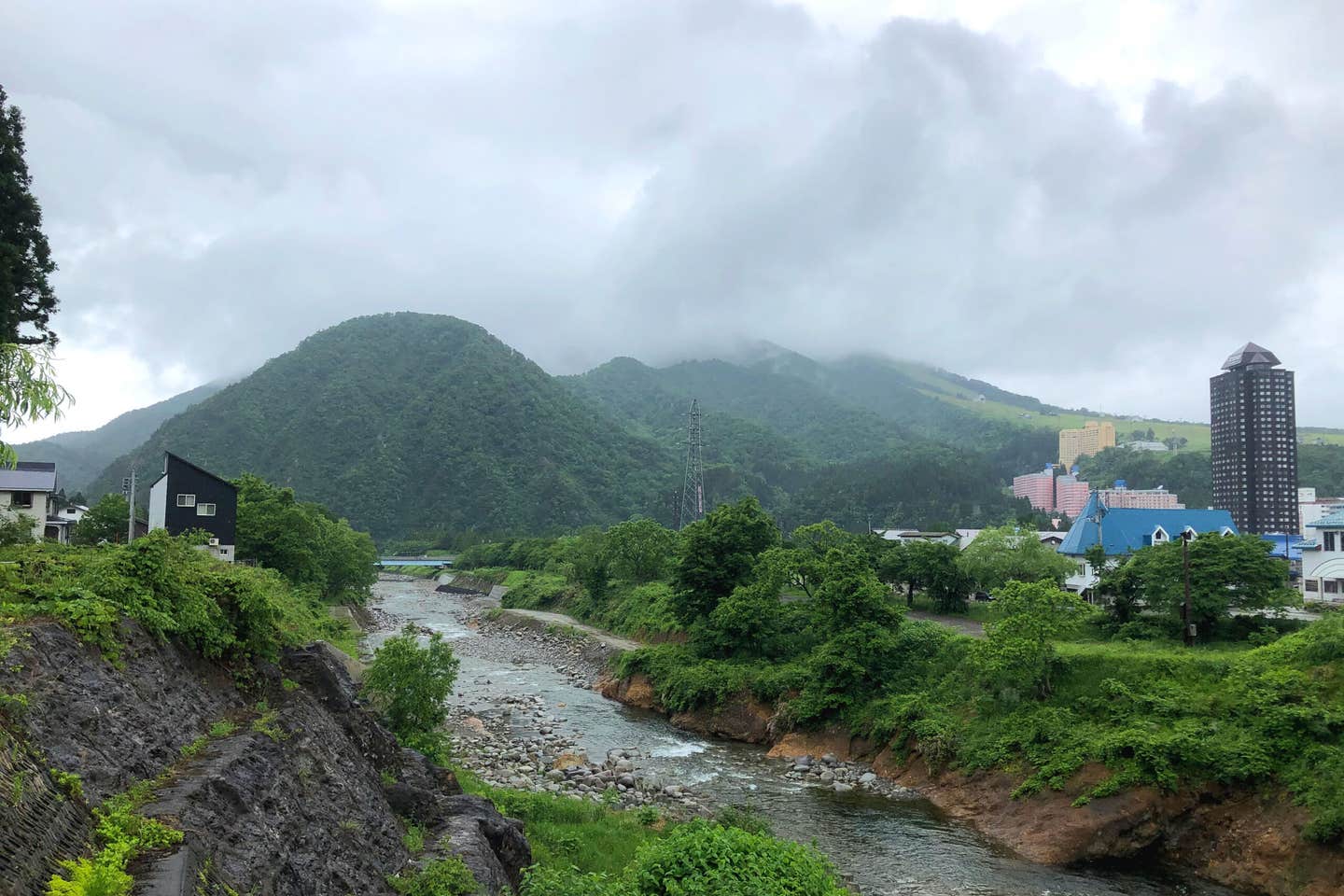
Like many towns in Japan, Minami Uonuma has its own meibutsu, or local dish widely considered to represent the place. This town’s claim to fame is a fresh, crisp, and colorful dish called “kirizai-don,” a rice bowl topped with nozawana leaf, takuan radish, crushed kagura nanban pepper, and natto (fermented soybeans). Kirizai, which translates simply as “cut up vegetables,” is a centuries-old recipe. “This dish uses the knowledge that people living here acquired in the old days. By using food that can be preserved through winter, we utilized what was readily available and also healthy enough to feed an extended family without wasting anything,” says Yuji Nagumo, a Niigata native and owner of local restaurant Kyo. Kirizai was also once seen as a utilitarian, nutrient-rich army ration. “Back in the Sengoku period (over 500 years ago), samurai could quickly cut up and serve food like kirizai before leaving for battle—things like preserved nozawana and natto probably gave them a quick energy boost before a fight,” Nagumo adds.
Kirizai belongs to a type of cooking sometimes known as yamabito ryouri, or “mountain man cuisine,” a catch-all term for the home cooking of the farming communities in the mountains of Niigata prefecture, as well as parts of neighboring Gunma and Nagano. Yamabito ryouri is seasonal, homemade, and inherently farm-to-table; though this style of food is not strictly vegetarian, most dishes are—and feature local produce almost exclusively, be it fresh, pickled, or fermented. While probiotic foods are now widely regarded as beneficial for digestive health, past inhabitants of Minami Uonuma preserved vegetables for the simple purpose of prolonging their shelf life through the winter. In an interview shortly before he passed away in January, Takumi Saiki, the late owner of beloved local restaurant Kometaro, explained, “That was the way things were for hundreds of years around here; it was never thought of as health food per se, just a part of an everyday sort of meal.”
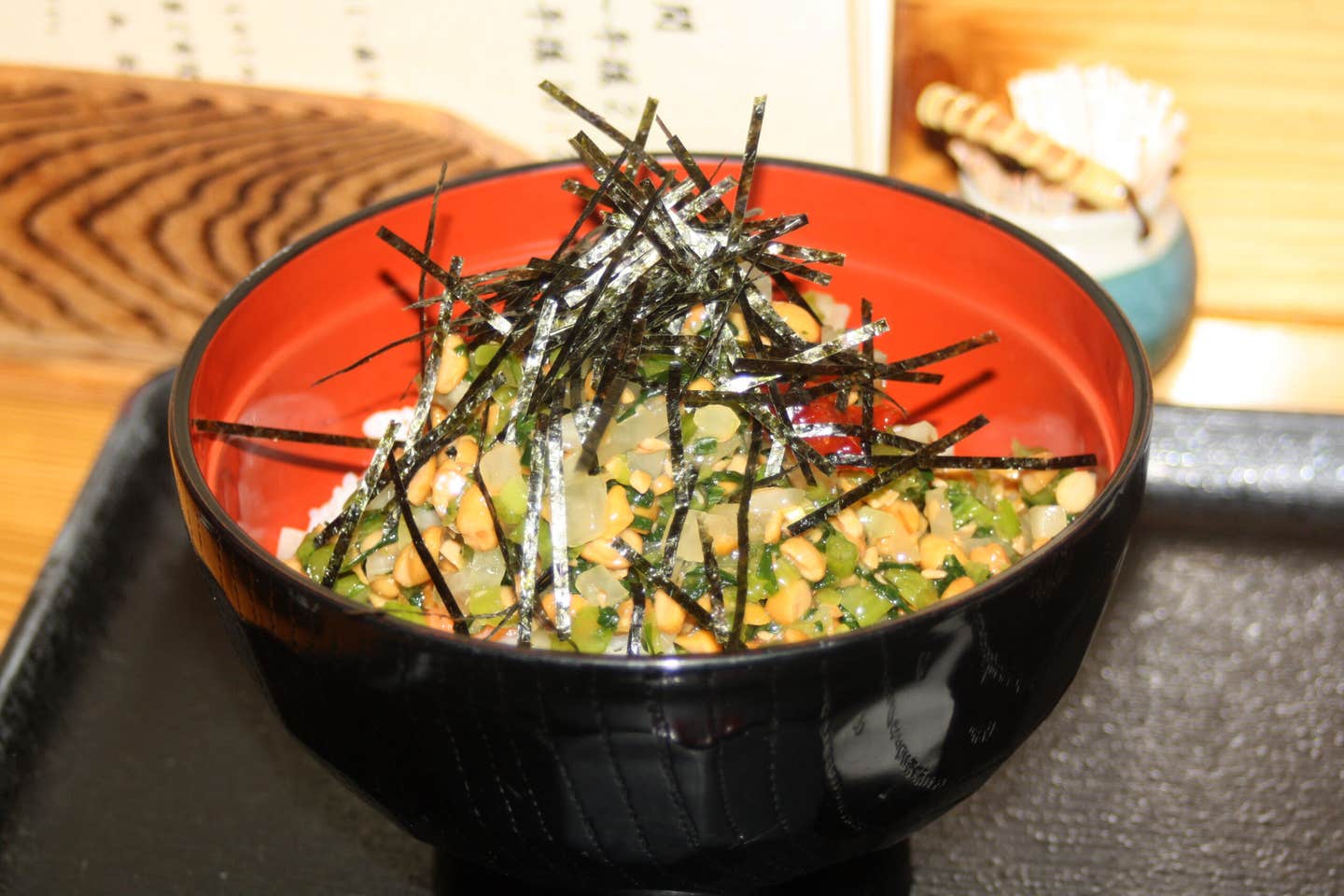
Though the dish is a local staple, one would be hard-pressed to find the humble, unpretentious kirizai-don outside of Niigata prefecture. Until recently, the dish had little name recognition outside of the regions that consume it. Even in Niigata, kirizai-don is a traditionally home-cooked meal that doesn’t often show up on restaurant menus, and Kyo is one of the few restaurants that serves it regularly. “I think it’s the closest equivalent to something like soul food; there’s nothing else quite like it in Japan,” Nagumo says. Though it has become in vogue in Japan to refer to comforting dishes as “soul food,” yamabito ryouri may have the strongest claim: it is traditional home cooking with a pedigree like nothing else around.
Nagumo is a member of the “Kirizai DE Aitai,” a group of about 20 local restaurant owners who have been promoting kirizai-don—and reintroducing their countrymen to healthy and delicious farm-to-table cuisine, with an emphasis on the locally grown produce once considered staple foods around these parts. “Kirizai is important because all of its ingredients can be procured locally,” says Nagumo.
Because of the organization’s outreach, kirizai is now being served to local children as part of school lunches. The dish was even featured in the nationwide B-1 Grand Prix competition (a famous contest featuring regional cuisines), drawing food enthusiasts from all across Japan in search of kirizai-don. The group also recently began to serve the dish at rest stops during “gourmet bike tours”, aiming to promote cycling and food in the area. “We thought it would be nice to show the cyclists some of our local specialties, and they asked if we could provide some kirizai,” says Nagumo.
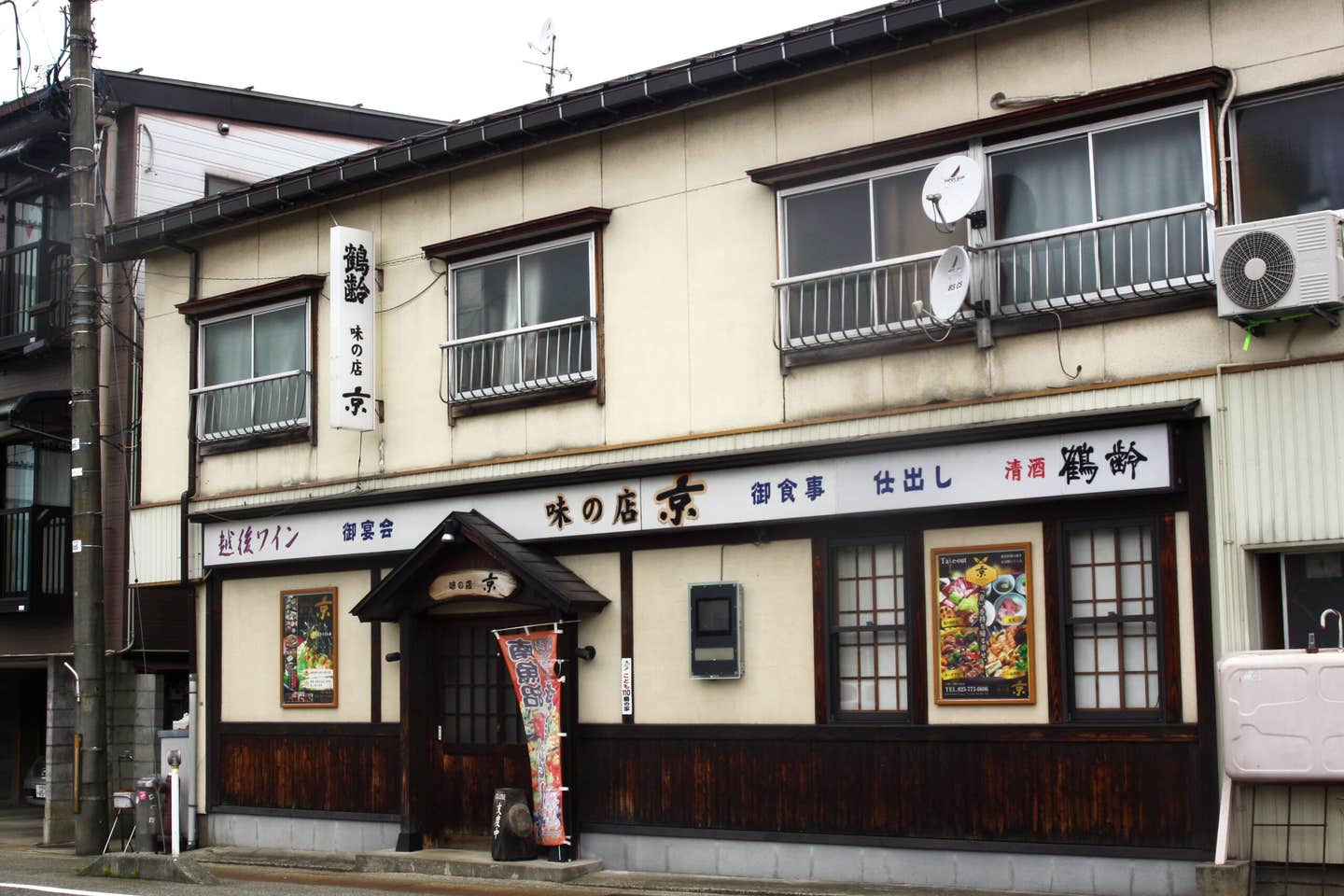
Last year, kirizai restaurants were also part of the town’s “Majidon” local gourmet publicity campaign spotlighting Minami Uonuma’s restaurant scene. More and more, kirizai has become synonymous with culinary promotion in this rural area, and it is even occasionally dubbed “chobishoku,” a Japanese portmanteau that can be translated as “gut beauty food.”
For 550 yen, or roughly four U.S. dollars, one receives a big bowl full of kirizai-don at Kyo. The famously gooey, stringy natto, combined with the slightly tart nozawana, crunchy takuan, and piquant nanban pepper, creates a complex and bold textural sensation. The simplicity of the dish allows the clean flavors of the plant-based toppings to take center stage.
For Nagumo and others, serving such food is a way to preserve their plant-focused culinary culture for future generations. They hope that both the local children who now routinely eat kirizai and visiting adults who travel a long way in search of the dish can appreciate its benefits beyond taste or novelty. They want to instill eaters with an interest in the foods that grow natively in their own backyards, as an alternative to imported or factory-farmed products. “Of course, my son eats fast food. But when he comes back home from college, he likes things like kirizai,” Nagumo says. “[He] says it tastes like home.”
For the “mountain men” and those who share their table, eating vegetables is both the past and present—and could pave the way for a brighter, tastier future.
Keep Reading
Continue to Next Story









